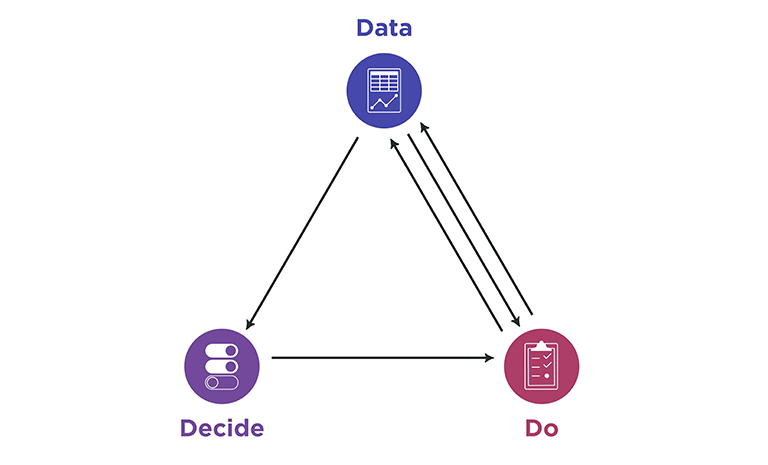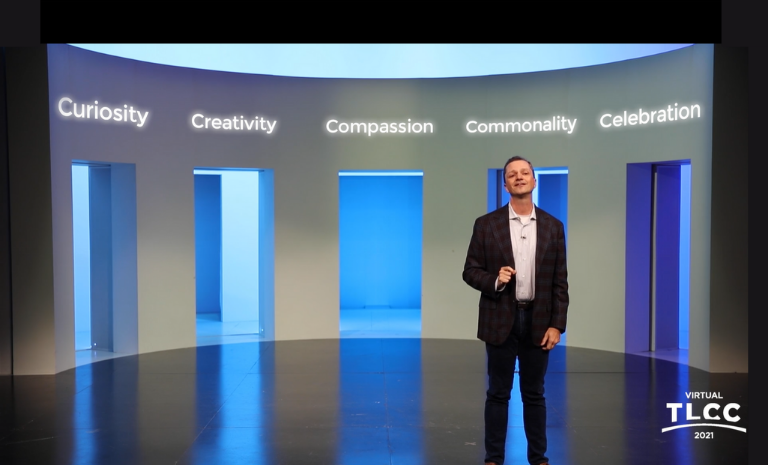Business Strategy
Article
Insights & Innovation
bca082d7-1ec8-4ab3-aec0-56aee652a589
5 min
https://edge.sitecorecloud.io/tessituraneab9a-tessiturane5642-staging-5396/media/Images/Stock-Photography/Data-decide-do-768x465.png?h=465&iar=0&w=768
Three steps to data-informed decision making
Data, decide, do

Associate Director, Business Intelligence, Tessitura
Data, decide, do
4/10/2023
5 min
Data-informed decision making has become a hot topic amongst arts and cultural organisations.
This is especially true as they surface insights about their customers through CRM systems like Tessitura. But what does this phrase really mean, and why is it important?
Data is objective, unbiased information. Data-driven decision making is the process of analysing this data to identify patterns and trends in that data, understanding the context around those patterns to generate insights, and using that insight to make business decisions.
The alternative to data-informed decision making is to follow your intuition. You may have heard it take the form of ‘I feel that…’ or ‘based on my experience I think…’. Sometimes, when staff have been at an organisation for a long time, these gut feelings can be given the same level of credibility as actual data. Intuition, however, is subjective. It is vulnerable to cognitive bias. And bias, based on your own lived experiences and limited worldview, can lead to inaccurate judgement and illogical interpretation.
Data is essential for objective, unbiased decision making.
Don’t get me wrong — there are times when intuition can be effective, such as when a decision needs to be made on short notice. (I’m sure many of us have experienced a last-minute show cancellation, cast change or customer interaction where we’ve had to be responsive.) But it’s still risky to focus on intuition alone in making business decisions. So: how can you be data informed in your decision making, even when under pressure?

Our framework
At Tessitura, we use a three-phase framework to achieve data-driven decision making: data, decide, do. Without all three of these elements, the process becomes out of balance.
So what exactly do these three phases encompass?
Phase 1: Data
Let’s start with data. It’s important that, as an organization, you generate relevant data. You want that data to be accessible so that you can leverage it as an asset to provide insight into the success of your operations. Without data you’re relying on instinct or opinion, that gut feeling that can lead us astray. Data is essential for objective, unbiased decision making.
It’s important to have data in mind when you configure your systems and decide on your processes. This will ensure you generate the relevant data you need to report on your success.
Phase 2: Decide
Data then leads to decide. Using insights tools like Tessitura Analytics, you can make decisions with confidence. For example, when you can see which tactics are most effective at helping you achieve your goals, you can put more resources behind those activities. And if something isn’t having the desired impact, you can stop wasting resources on it and redirect them in a more productive direction.
Without decide we end up in a loop, accumulating data through actions without ever benefitting from the insight it could provide. Does the phrase ‘because it’s always been done this way’ sound familiar? If so, you may benefit from focusing more attention on ensuring your actions are led by insights rather than instinct.
Phase 3: Do
This leads to the third phase, do: the doing of the things, the activities that come out of decisions. Because you’ve used data to inform your decisions, the things you are doing can be accomplished with greater purpose and efficiency. This step is essential: it’s when you act on the insight you’ve gained from your data to achieve progress.
What’s next?
Once you have all three elements, you can refine the cycle even further by supporting the movement among them. To support progress between data and decide, for example, business insights tools and processes can deliver information faster and more effectively. This will help measure progress and inform your decision making. These tools can also create data visualizations such as charts or graphs, as well as produce reports for decision makers to use. Those visualizations can be a vital tool in telling the story of your data.
Planning and communication work together to turn decisions into considered and effective actions. They also support your business in prioritising which of these actions to deliver when. Meanwhile, operational decisions and their execution create data from ongoing activities. So it’s important to have data in mind when you configure your systems and decide on your processes, as this will ensure you generate the relevant data you need to report on your success.
You can start at any point in the data, decide, do cycle. The key is to remain aware of where you are in the cycle and what you need to do next.
Think of these elements as a continuous cycle, not a sequence. The process isn’t always data, decide, do. It can be decide, do, data, or even do, data, decide. Whichever step you start with, it leads naturally to the next.
There will, of course, be times where it’s not possible to start with data. That’s okay. Sometimes you will need to react to some external factor outside of your control. A gig gets cancelled, perhaps, or a venue is forced to close for the evening, compelling you to respond to the situation with some immediate action — starting with do. Or perhaps you have a sponsor or funder whose goals you need to achieve with the money given — so that you’re starting with a decision. Every point on the triangle informs the others.
You can start at any point in the data, decide, do cycle. The key is to remain aware of where you are in the cycle and what you need to do next. Data, decide, do is there to help you to remain data-driven in your decisions as you navigate your way through any situation.
Topics
Business Strategy

Kate Watson
Associate Director, Business Intelligence
Tessitura

Why Arts & Culture is Essential Today
Arts & Culture
Healing the world requires five human traits: arts & culture delivers them all.

A contactless customer journey with a personal touch
Arts & Culture / Business Strategy / COVID-19 / Technology / Ticketing & Admissions
How Georgia Aquarium creates a visitor-focused experience